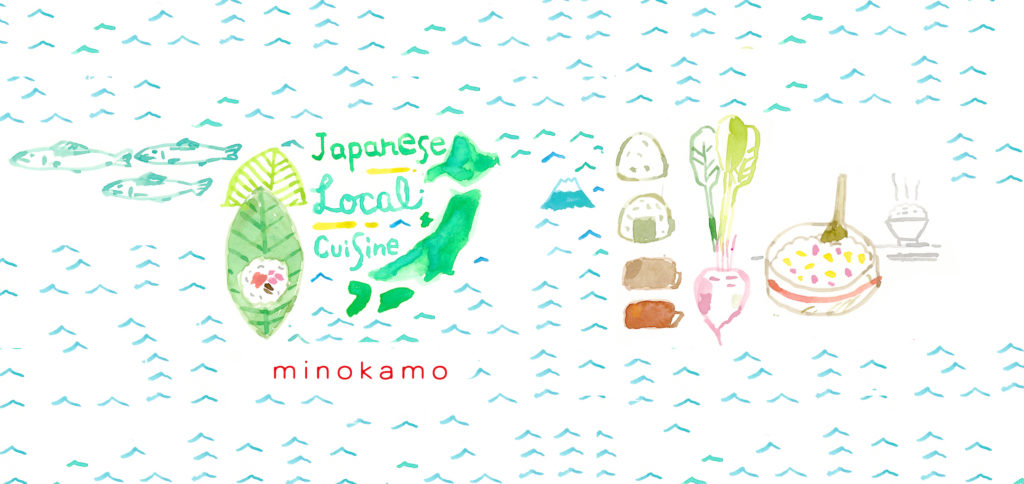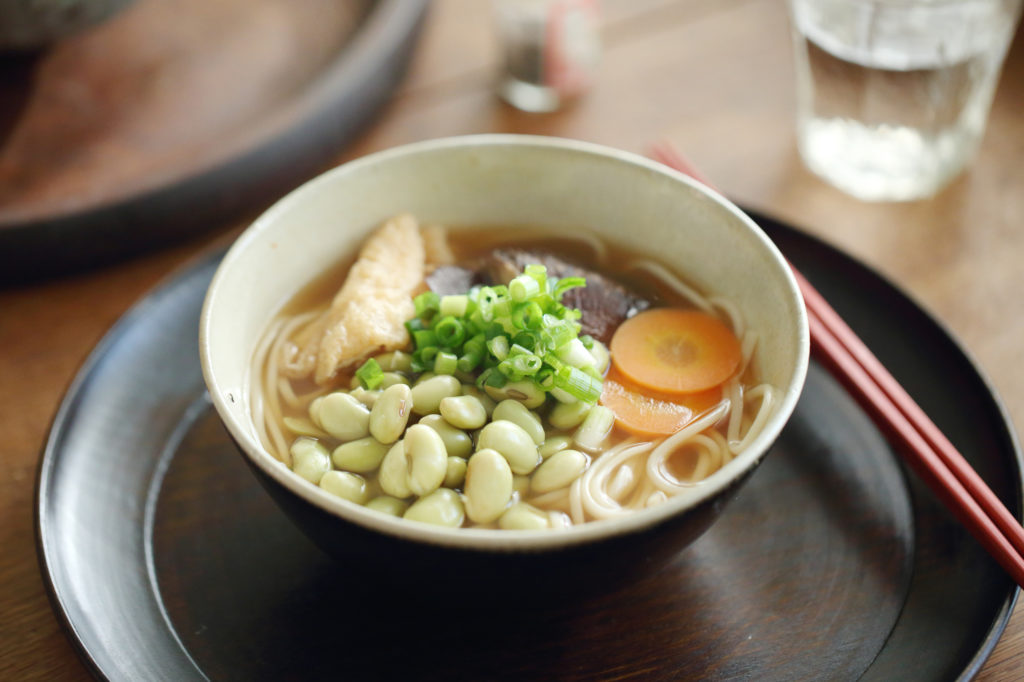
Ingredients (serves 2)
100 g soybeans
1,000 ml water
1 large or 2 medium dried shiitake mushroom
600 cc water (for infusing the dried shiitake)
1 abura-age / deep-fried tofu pouch
4 slices carrot (and / or kamaboko fish cake)
Young green onion to garnish
A (flavoring for abura-age and dried shiitake)
50 cc water
1 tbsp soy sauce
1 tbsp mirin
B (udon soup)
400 cc shiitake stock (add water if needed)
100 cc soybean stock
2 tbsp soy sauce
3 tbsp mirin
160–200 g udon noodles (dry or precooked)
* Soybeans are difficult to cook in small amounts, and for this reason, the recipe makes 4 servings of soybeans. Any leftovers are delicious with a drizzle of soy sauce or as a salad topping.
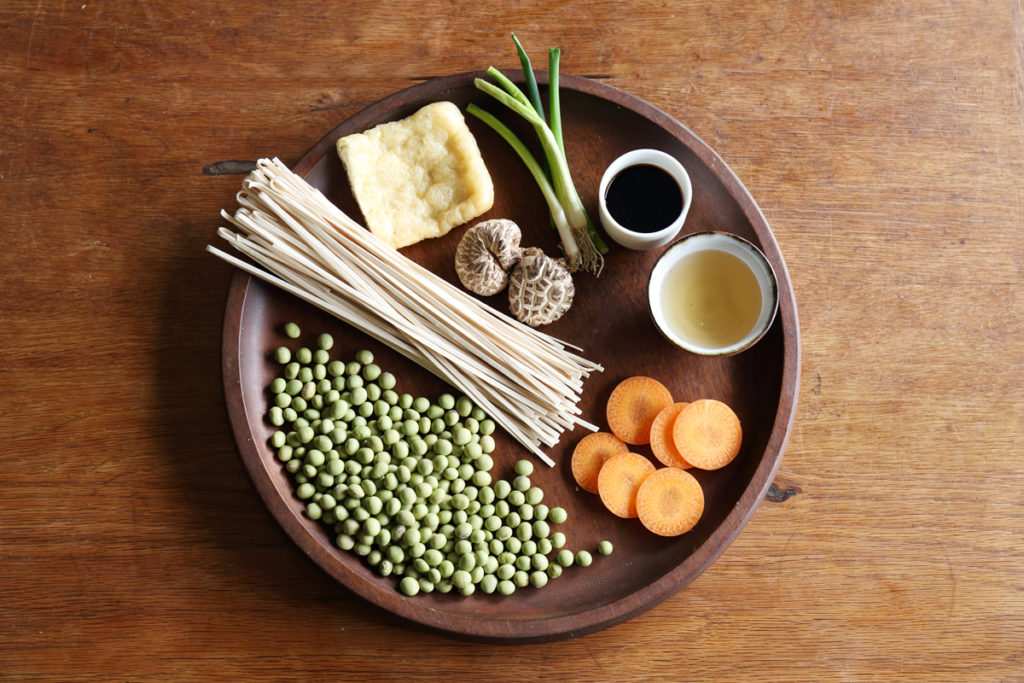
How to Make
1. Infuse the soybeans in 1,000 ml water (not in recipe) overnight, and then strain. Heat the soybeans and 1,000 ml water in a saucepan. Bring to a boil, reduce the heat to low, remove the scum every so often, and cook until tender. Add water if the soybeans show above the surface. Infuse the dried shiitake mushroom in 600 cc water, and then cut into either four equal pieces or thin slices. Finely chop the young green onion. Cut the abura-age into bite-size pieces.
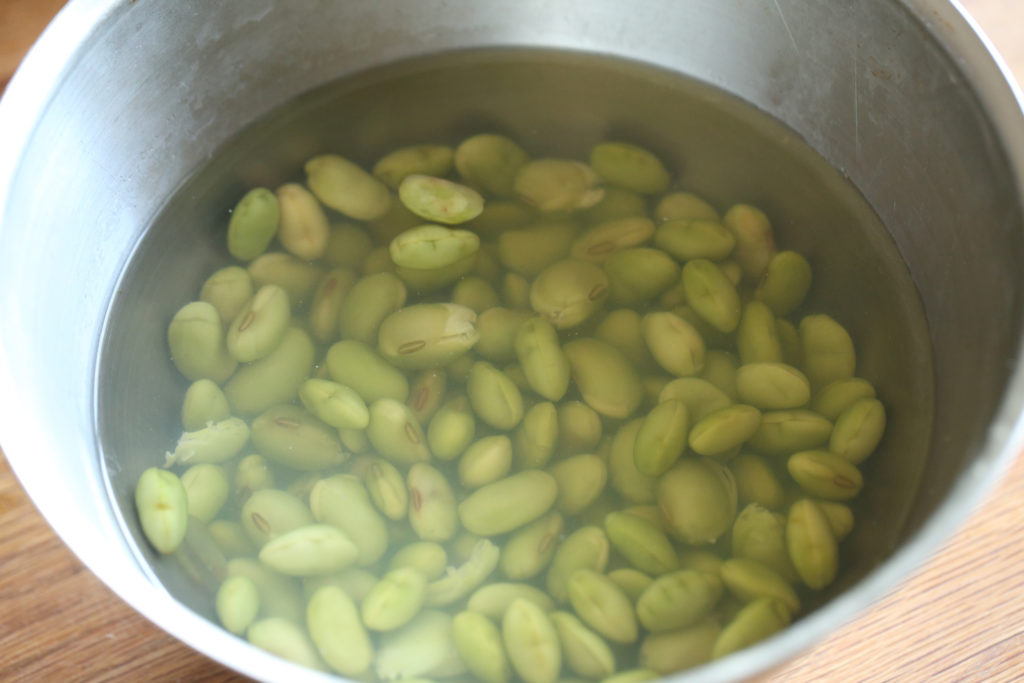
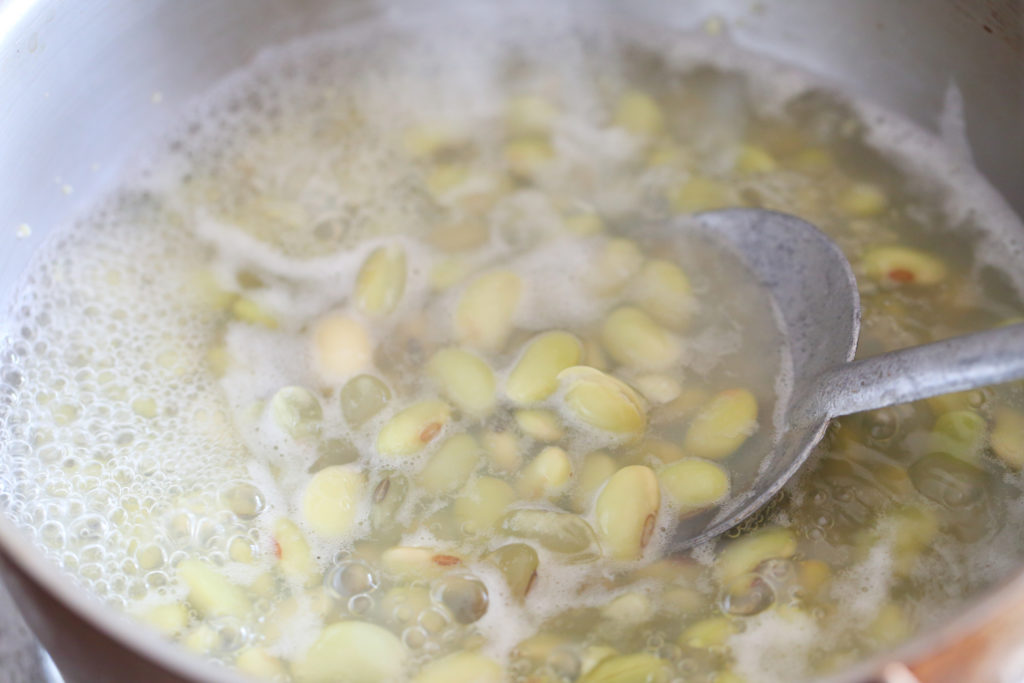
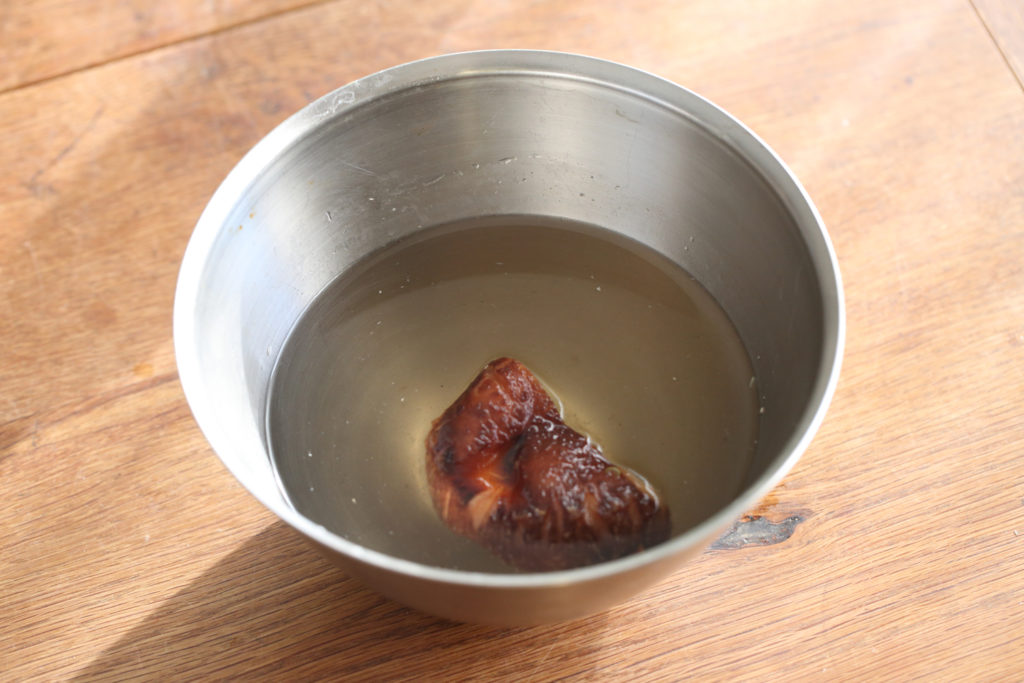
2. Simmer A, shiitake, and abura-age in a small saucepan until the liquid is almost completely reduced, and then turn the heat off and let sit.
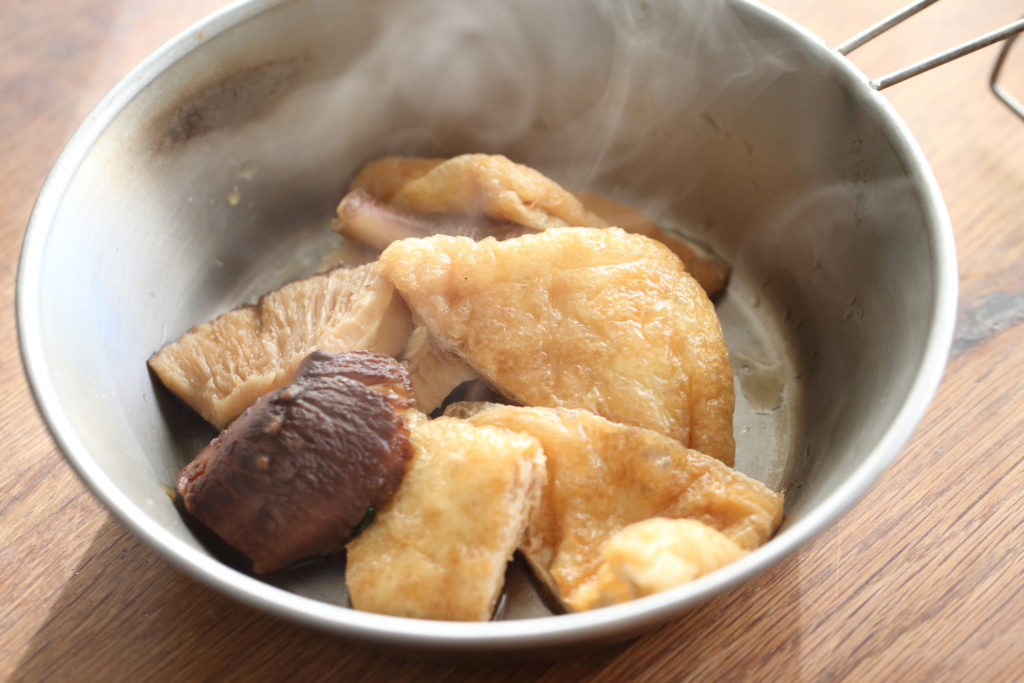
3. Boil the udon noodles in plenty of water as per the instructions on the packet. Meanwhile, prepare the udon soup. Heat B and carrot in a saucepan, bring to a boil, and transfer to a bowl. Add the cooked udon noodles and top with shiitake, abura-age, young green onion, and carrot.
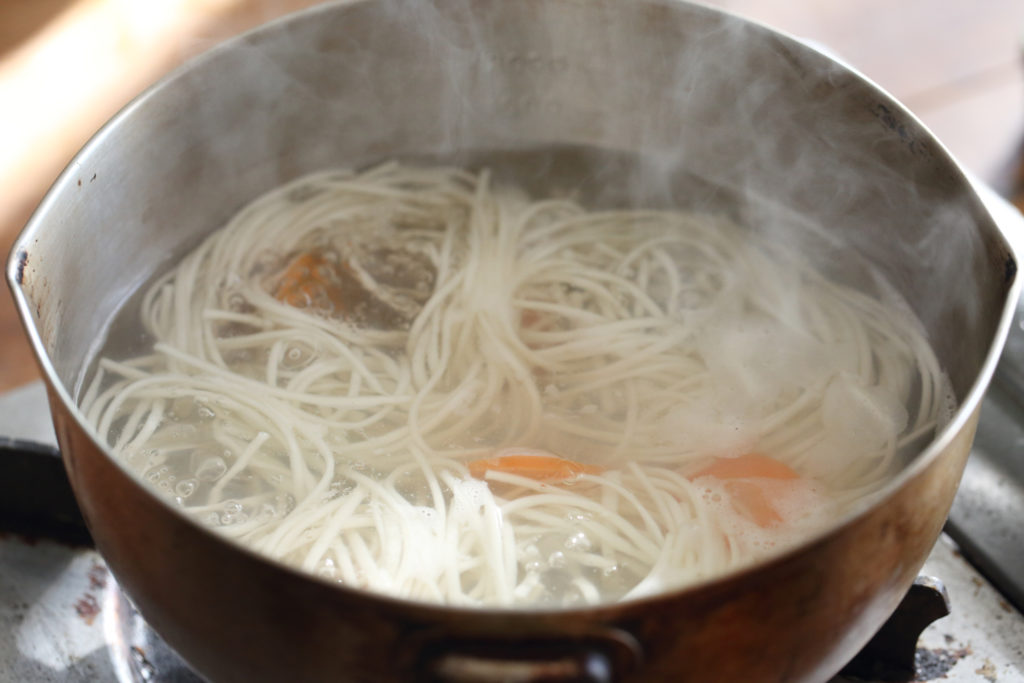
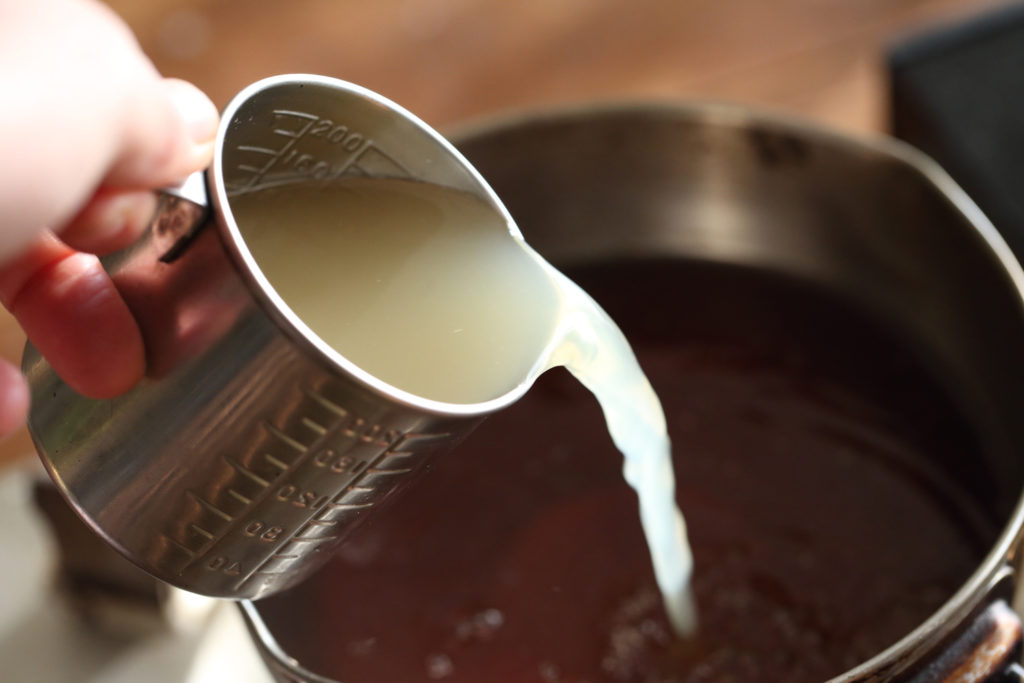
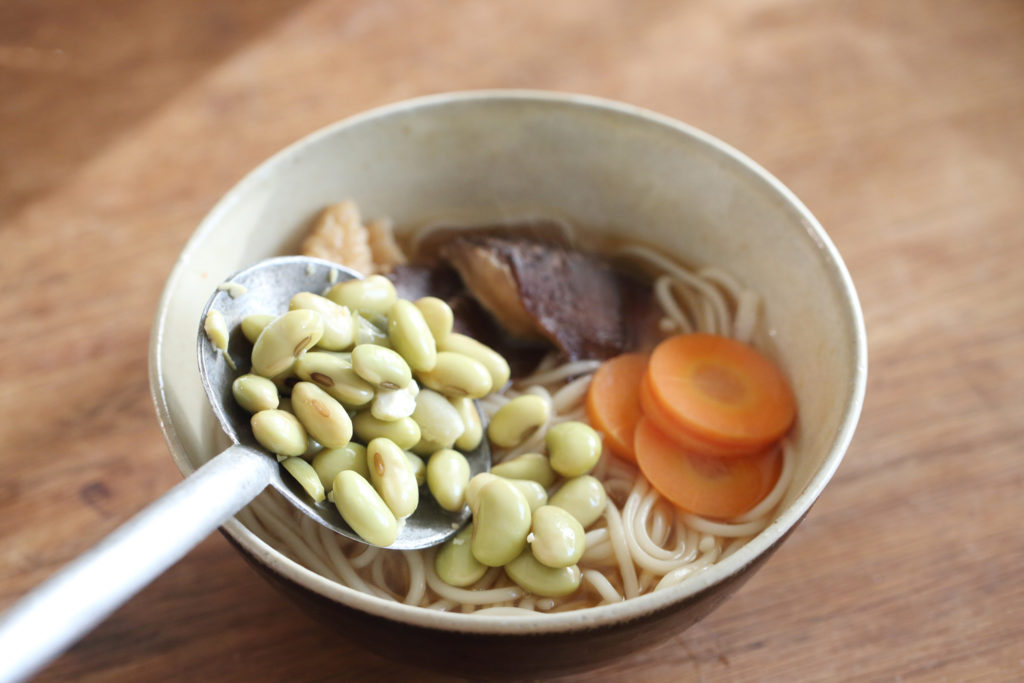
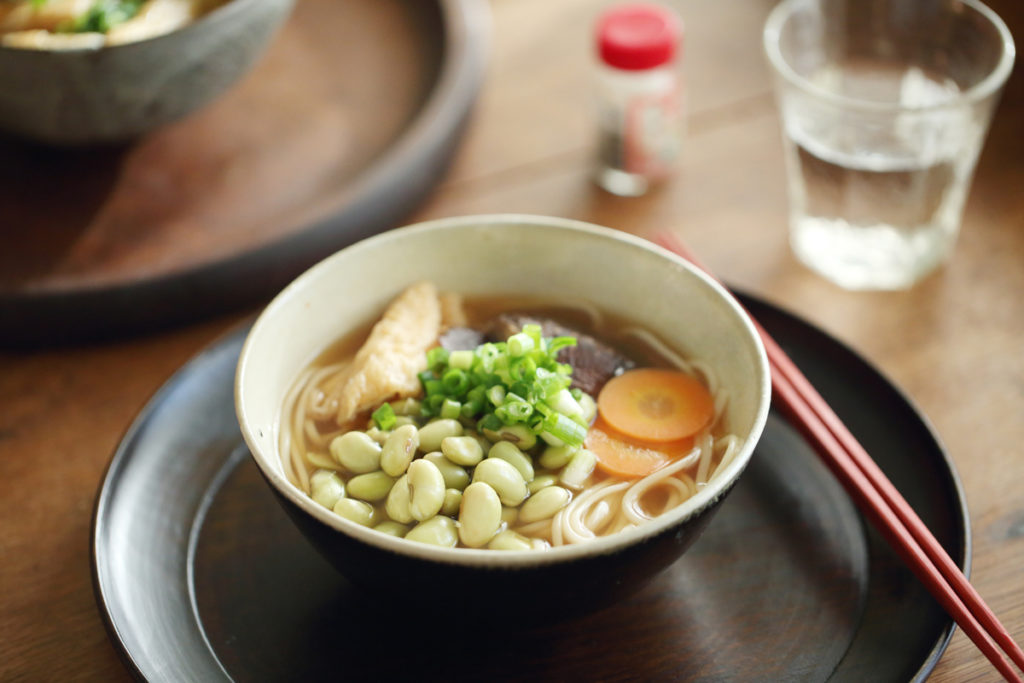
My first bowl of soybean udon came with a surprisingly generous helping of soybeans. I had it in its birthplace of Etajima, a city of Hiroshima Prefecture made up of a cluster of islands in the Seto Inland Sea. The combination of udon noodles with soybeans was also a first for me, but this is an ordinary everyday local dish for the islanders. It was created because the rugged terrain of Etajima was not suitable for rice production, and the residents grew soybeans instead. Although soybean cultivation has diminished today, vestiges of the practice can be seen in the soy sauce brewers and tofu stores dotting the islands. For family gatherings, soybean udon is made with hand-kneaded noodles. The dish may be served chilled in the summer, and the udon (thick wheat flour noodles) substituted with somen (a very thin version).
The soybean stock gives the soy sauce-based soup a subtle sweetness and the deliciously round flavor of soybeans. Local diners and tofu stores add toppings like kamaboko fish cake, abura-age, young green onion, and shiitake mushroom.
I suggest serving this dish with a Chinese soup spoon, because the tiny beans are difficult to pick up with chopsticks. Eat up the liberal topping—soybeans are a good source of nutritious, high-quality protein. And if you have the chance to visit Etajima, try other specialties like oysters, mikan oranges, and olive oil as well as soybean udon.
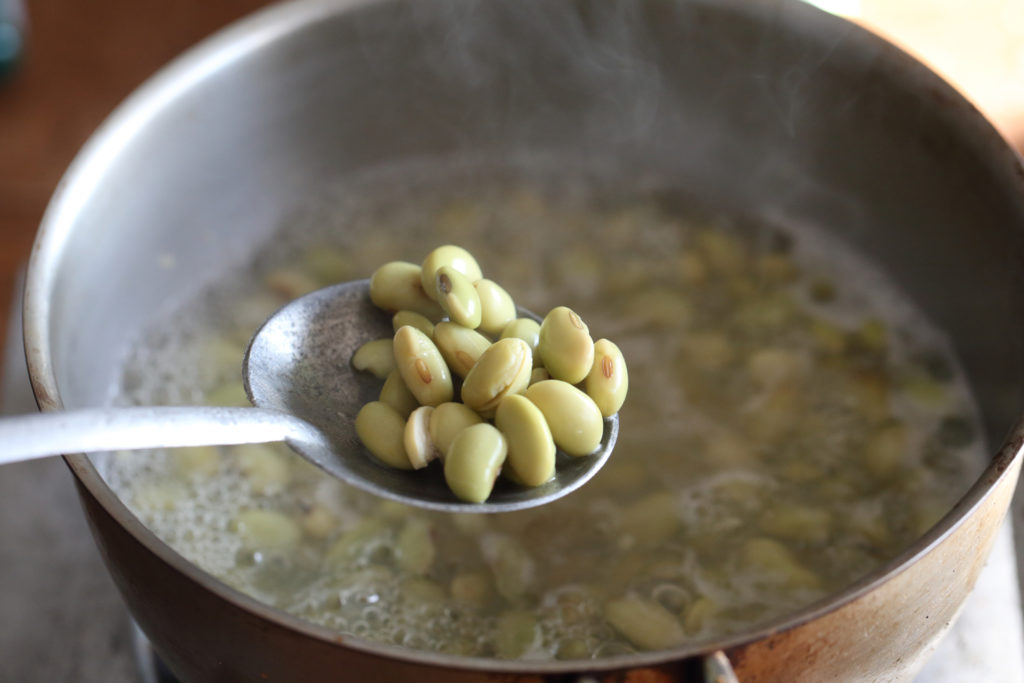
minokamo | Cookery expert / Photographer
Gifu Prefecture native minokamo’s culinary adventures were inspired by her fond childhood memories of cooking with her grandmother. She researches, writes about, and arranges regional dishes that capture, through their preparation and presentation, sensory enjoyments inspired by local climate, history, and lifestyles. Ryori tabi kara tadaima(Back from a Cooking Journey; Fudosha), published in September 2020, is a collection of recipes from minokamo’s visits to homes up and down Japan.
